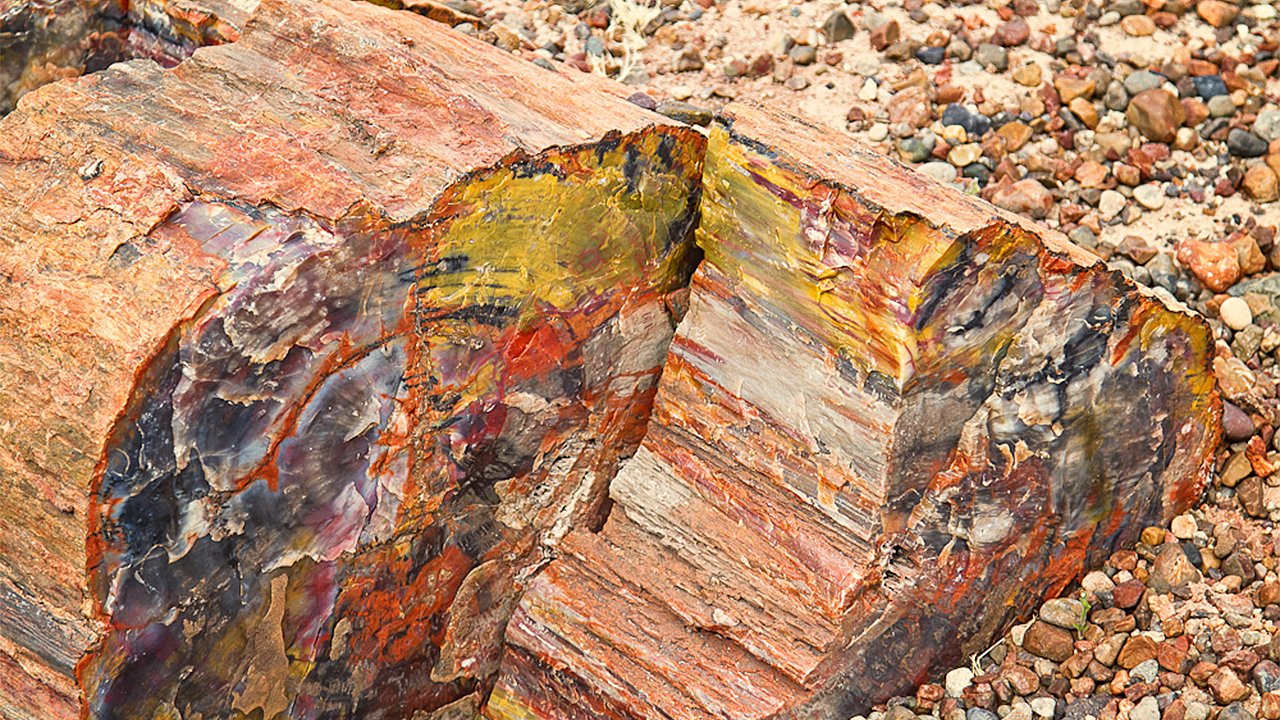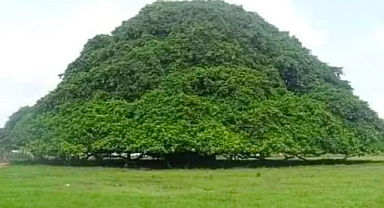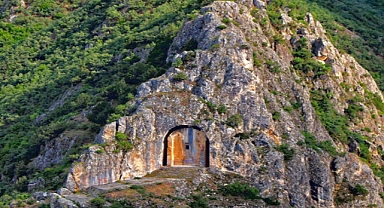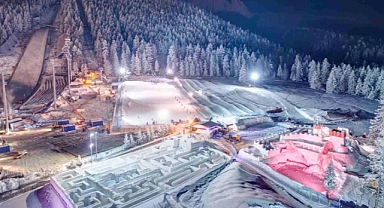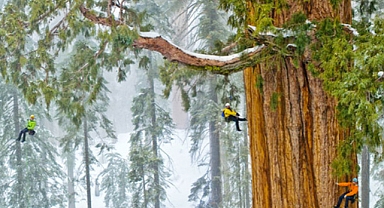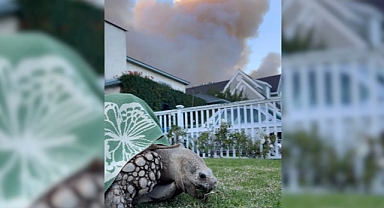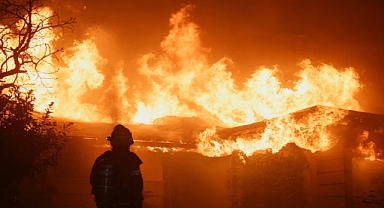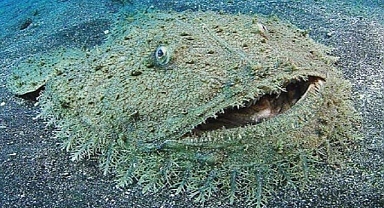How Did the Petrified Trees of Arizona Form?
Fossilized wood, also called petrified wood, forms when organic plant material becomes buried in sediment and escapes decay. Normally, wood decomposes when exposed to oxygen and organisms. However, when covered by river sediments or volcanic ash, it is shielded from these natural processes. In this preserved state, groundwater flows through the sediment, carrying minerals like silica, calcite, pyrite, or opal, which replace the wood’s tissues over time. The result is a mineral-rich fossil, often retaining the intricate details of the original tree’s bark, grain, and cellular structure. When opal or quartz forms inside these trunks, the petrified wood takes on vibrant colors, thanks to traces of iron, manganese, and other minerals. These fossilized trees are a spectacular part of Arizona’s natural history, drawing visitors to the Petrified Forest National Park.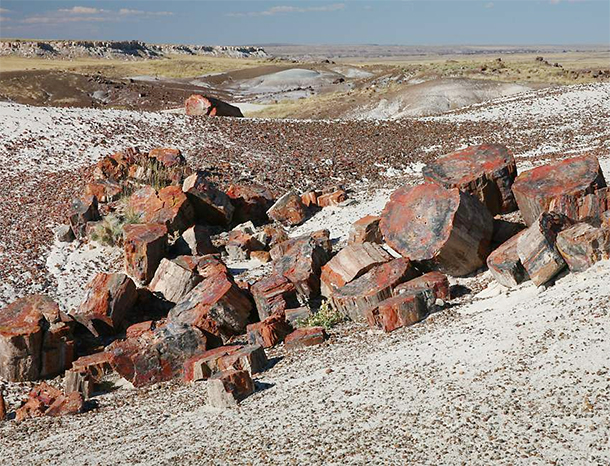 Ancient Origins: A Forest Preserved by Time
Ancient Origins: A Forest Preserved by Time
Around 225 million years ago, during the late Triassic period, the region now known as northeastern Arizona had a tropical lowland climate. Back then, it was home to towering coniferous trees, many growing as wide as nine feet in diameter and reaching up to 200 feet tall. Seasonal rains fed rivers that ran through the area, where these massive trees grew, fell, and were carried by floods to rest along riverbeds. This area was also geologically active, with nearby volcanoes erupting frequently, covering the forest floor in layers of ash. When the ash mixed with sediment and buried the fallen trees, the wood was cut off from oxygen and other organisms. Over time, groundwater dissolved the silica in the ash, carrying it through the sediments and into the wood. The silica slowly crystallized within the tree structures, replacing the organic material with quartz.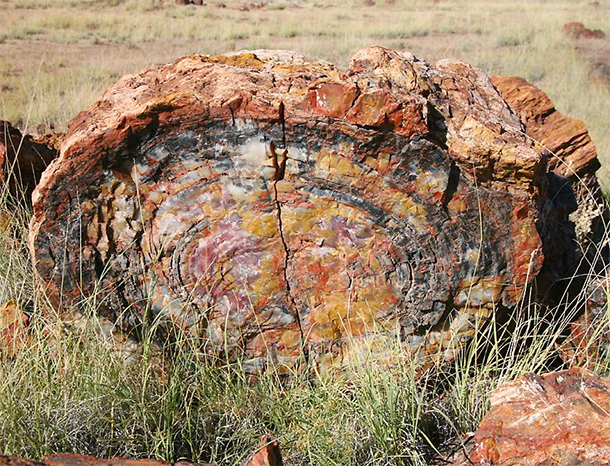 The Formation of the Chinle Landscape
The Formation of the Chinle Landscape
This fossilization process—known as silication—produced the stunning petrified wood that makes the Chinle Formation famous today. Along with quartz, trace minerals like iron and manganese seeped into the wood, creating kaleidoscopic hues of red, yellow, and brown that attract scientists, artists, and tourists alike. Over millions of years, erosion exposed the fossilized wood, as the softer mud and ash deposits covering the petrified trees were washed away. Today, the remnants of these ancient giants lie scattered across the landscape. Despite their incredible beauty, the wood's durability makes it more resistant to erosion than the surrounding rocks.Petrified Forest National Park: A Window into Deep Time
The Petrified Forest National Park spans 146 square miles near Holbrook, Arizona, along Interstate 40 (previously Route 66). Though the region is dry and windy, its elevation of 5,400 feet keeps temperatures cooler compared to lower-altitude deserts. The area features grasslands rather than the cacti typical of Arizona, providing a unique backdrop for the fossilized treasures scattered across the terrain. Beyond the petrified logs, this park is also a fossil-hunter's paradise. Alongside the ancient trees, paleontologists have uncovered fossils of freshwater snails, clams, large amphibians, crocodile-like reptiles, and early dinosaurs. This ecosystem gives visitors a glimpse into a long-lost prehistoric world that thrived millions of years ago.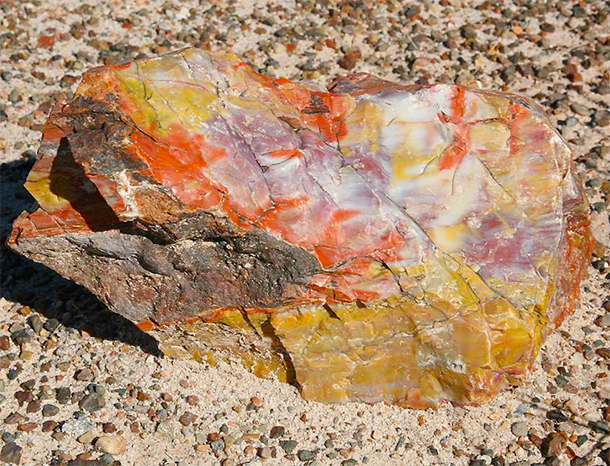 Colors in Stone: The Beauty of Quartz Crystals in Petrified Logs
Colors in Stone: The Beauty of Quartz Crystals in Petrified Logs
Silica, absorbed from the volcanic ash, crystallized into quartz within the tree trunks, transforming them into hard, stone-like fossils. When iron oxide and other minerals combined with the silica, they produced vivid streaks of color, creating stunning patterns within the logs. These richly-colored specimens have long fascinated collectors and artisans.The petrified wood is so striking that a booming industry emerged around it, with vendors cutting and polishing logs into decorative furniture, bookends, and wall displays. However, the demand for petrified wood has led to issues with theft. Despite park regulations, approximately 12 tons of fossilized wood are stolen from the park every year.Preserving History for Future Generations
The Petrified Forest National Park remains one of the world’s most important fossil sites, offering visitors the chance to explore prehistoric life while reminding them of the importance of conservation. The park is a place where science and beauty meet—where ancient trees that once shaded dinosaurs now lie as stone, frozen in time.
Fossilized wood, also called petrified wood, forms when organic plant material becomes buried in sediment and escapes decay. Normally, wood decomposes when exposed to oxygen and organisms. However, when covered by river sediments or volcanic ash, it is shielded from these natural processes. In this preserved state, groundwater flows through the sediment, carrying minerals like silica, calcite, pyrite, or opal, which replace the wood’s tissues over time. The result is a mineral-rich fossil, often retaining the intricate details of the original tree’s bark, grain, and cellular structure. When opal or quartz forms inside these trunks, the petrified wood takes on vibrant colors, thanks to traces of iron, manganese, and other minerals. These fossilized trees are a spectacular part of Arizona’s natural history, drawing visitors to the Petrified Forest National Park.
 Ancient Origins: A Forest Preserved by Time
Ancient Origins: A Forest Preserved by TimeAround 225 million years ago, during the late Triassic period, the region now known as northeastern Arizona had a tropical lowland climate. Back then, it was home to towering coniferous trees, many growing as wide as nine feet in diameter and reaching up to 200 feet tall. Seasonal rains fed rivers that ran through the area, where these massive trees grew, fell, and were carried by floods to rest along riverbeds. This area was also geologically active, with nearby volcanoes erupting frequently, covering the forest floor in layers of ash. When the ash mixed with sediment and buried the fallen trees, the wood was cut off from oxygen and other organisms. Over time, groundwater dissolved the silica in the ash, carrying it through the sediments and into the wood. The silica slowly crystallized within the tree structures, replacing the organic material with quartz.
 The Formation of the Chinle Landscape
The Formation of the Chinle LandscapeThis fossilization process—known as silication—produced the stunning petrified wood that makes the Chinle Formation famous today. Along with quartz, trace minerals like iron and manganese seeped into the wood, creating kaleidoscopic hues of red, yellow, and brown that attract scientists, artists, and tourists alike. Over millions of years, erosion exposed the fossilized wood, as the softer mud and ash deposits covering the petrified trees were washed away. Today, the remnants of these ancient giants lie scattered across the landscape. Despite their incredible beauty, the wood's durability makes it more resistant to erosion than the surrounding rocks.Petrified Forest National Park: A Window into Deep Time
The Petrified Forest National Park spans 146 square miles near Holbrook, Arizona, along Interstate 40 (previously Route 66). Though the region is dry and windy, its elevation of 5,400 feet keeps temperatures cooler compared to lower-altitude deserts. The area features grasslands rather than the cacti typical of Arizona, providing a unique backdrop for the fossilized treasures scattered across the terrain. Beyond the petrified logs, this park is also a fossil-hunter's paradise. Alongside the ancient trees, paleontologists have uncovered fossils of freshwater snails, clams, large amphibians, crocodile-like reptiles, and early dinosaurs. This ecosystem gives visitors a glimpse into a long-lost prehistoric world that thrived millions of years ago.
 Colors in Stone: The Beauty of Quartz Crystals in Petrified Logs
Colors in Stone: The Beauty of Quartz Crystals in Petrified LogsSilica, absorbed from the volcanic ash, crystallized into quartz within the tree trunks, transforming them into hard, stone-like fossils. When iron oxide and other minerals combined with the silica, they produced vivid streaks of color, creating stunning patterns within the logs. These richly-colored specimens have long fascinated collectors and artisans.The petrified wood is so striking that a booming industry emerged around it, with vendors cutting and polishing logs into decorative furniture, bookends, and wall displays. However, the demand for petrified wood has led to issues with theft. Despite park regulations, approximately 12 tons of fossilized wood are stolen from the park every year.Preserving History for Future Generations
The Petrified Forest National Park remains one of the world’s most important fossil sites, offering visitors the chance to explore prehistoric life while reminding them of the importance of conservation. The park is a place where science and beauty meet—where ancient trees that once shaded dinosaurs now lie as stone, frozen in time.
